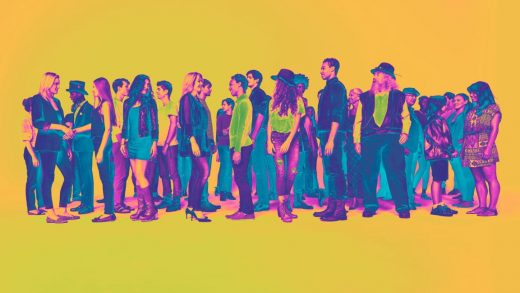This is how to look at diversity as more than a quota
Not a day goes by when I don’t hear about the next big thing in consumer tech. It could almost seem business as usual to hear about another fast-growth startup, but when you look closer at the startups that are capturing the hearts of consumers, they tend to have a few things in common. They are looking at the definition of consumers through a new, more inclusive lens. And that’s a good thing.
In 2016, when I founded Victress Capital together with Suzanne Norris, it was with the conviction that as female investors with deep consumer startup expertise, we could leverage our differentiated networks and insights to identify early-stage companies that challenge the norms and fulfill unmet needs. And we did.
Fast-forward several years, and we continue investing in gender-diverse teams that are systemically underserved in one or more ways. Through our founders, we bet on what we believe is the future—that underserved founders are often the ones who most authentically understand the needs of another important segment—underserved consumers. All too often, products and services are built for one target consumer at the exclusion of all else, and I believe that needs to change from all who are involved in building the companies of tomorrow.
Savvy startups are already moving away from defining their target consumer in terms of age-old, overly broad segments like Gen Z or females over 40, and instead, they are taking a good look at changing demographic data. The nation is diversifying even faster than predicted, according to the Brookings Institute report on 2020 Census Data. And, even within those statistics, previously defined categories are starting to blur. The New York Times reports, “The number of mixed-race Americans increased nearly threefold in the past decade alone; 80% of intermarriages in the United States today unite non-Hispanic white partners with members of an ethnic or a racial minority.”
When you expand your consumer lens, you will capture the users of tomorrow. Here’s how.
Broaden your idea of the target audience
Everyone is a consumer, always evolving and changing. Intersectionality—or the interconnected nature of social categorizations such as race, class, and gender—is at the heart of inclusivity, and successful audience strategies. It’s time to move away from the limiting, monolithic categories like millennials and take a closer look at what is driving your consumer. Shift the question, Who is your company for? What do your consumers care about? Maybe it’s affordable mental health services or body-inclusive swimsuits. Try to focus on the need or desire instead of general assumptions about age, race, or other binding characteristics. Remember that belonging is a key element of inclusion. Consumers identify with companies whose values align with their own. That notion of identifying with a company’s mission creates an essential sense of belonging.
Dig into accessibility
Founders who are willing to change paradigms around equity and access are the ones who will successfully disrupt the market. Think about how you can better serve more people. Are there certain markets or communities who have been historically left out of a product/service category? For example, there’s been a rise in fintech products to democratize wealth planning and AR/VR tools to provide career coaching for underserved communities. Break the mold with pay-as-you-go models, or other ways to create equal access and opportunity.
Advocate for change and transparency
Consumers want to identify with the companies they purchase from. Those who are courageous and willing to lead change will not just win the business, but they will also earn organic, even viral, referrals. Bold statements and actions, underpinned by a disarming level of transparency, will engender you to a bold new consumer. Dan Price, CEO of Gravity Payments, slashed his own salary to be able to raise the wages of everyone at the company. It’s not only about what you do, but how you do it. Stand for something!
Actively listen
The best founders are excellent listeners, and they use their observations to drive new insights. Great founders don’t get distracted by the voices they can hear; they seek out those who have no voice at all. They care about better understanding what people are looking for, who is being underserved, and where there is an unmet opportunity. Listening is not just about hearing about people’s problems; it’s about connecting with them, building community, and understanding them so you can authentically create products and services that will help them achieve their goals without friction. Having a willingness to listen will help you cultivate a truly inclusive mindset when it comes to building the businesses of tomorrow.
As companies are thinking about what it will take to build the next big brand, I believe this starts with redefining what it means to think about capturing your target consumer. We are living in a time where founders are willing to be bold, insist on equity, and be radically inclusive.. Founders are willing to allow their values to inform their business models and they beckon their customers to join a movement, not just purchase a product. And while change will take time, the boldest founders will lead us to a new tomorrow where there is a range of inclusive consumer products and services for all.
Lori Cashman is the managing partner of Victress Capital, an early-stage venture capital firm that invests in high-growth companies meeting the needs of the evolving consumer market.
(7)



